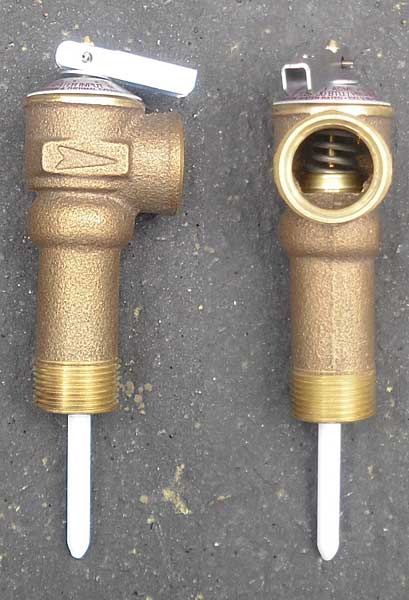If I infer what your problem is, the T/P valve is leaking. This is a safety device to protect you water heater from exploding (literally) if either the temperature or the pressure gets too high. If it is operating properly, when one of those conditions occurs, the valve will open slightly and relieve the excess then close. The result would be a pool of water on the floor, but unless you were right there at the time the valve opened, there would be no other symptom. It is also possible the valve is corroded and will not close tightly. Then the water would continue to at least drip. The third possibility is that you have what we call a "closed system". This is when you have a check valve in the incoming water line that prevents the expansion of heated water from being absorbed by the main water supply. This check can be in a pressure regulator valve or in the water meter. Since water does not compress, when you water heater does its thing and heats the water, the slight expansion has no where to go and the internal pressure rises very quickly and quite dramatically. The cure for this is a thermal expansion tank that is installed between the check valve location and the water heater. You may have one of these that has failed and needs replacing. Of course, the T/P could be faulty and need replacing as others have noted, by turning off the water, releasing the pressure in the tank, then unscrewing the T/P and putting in a new one.

